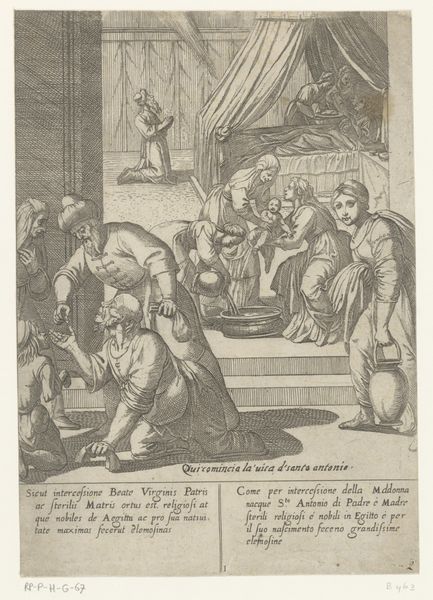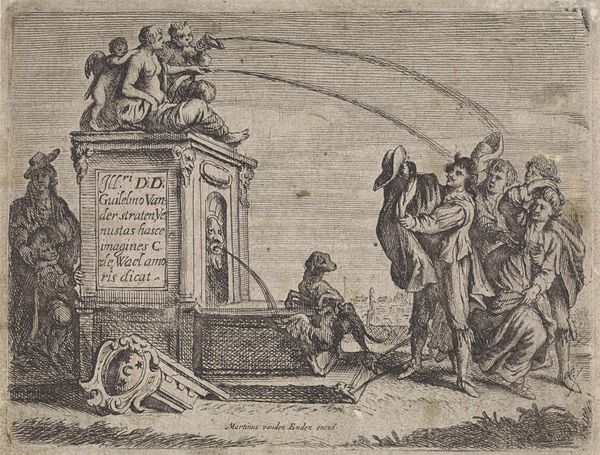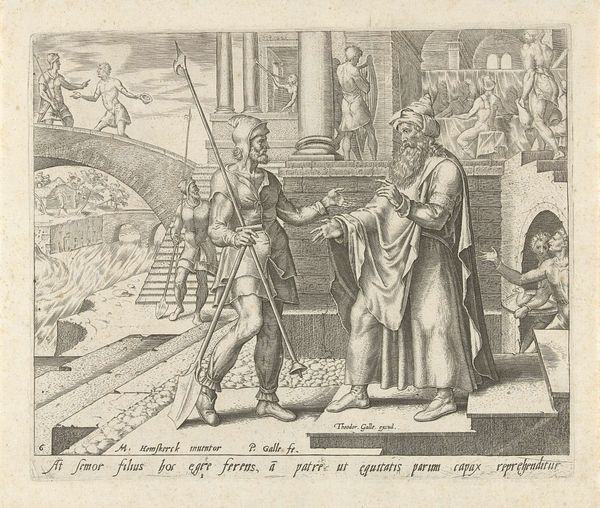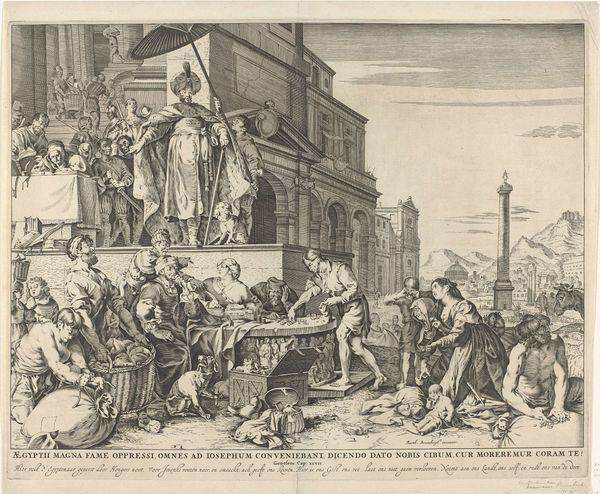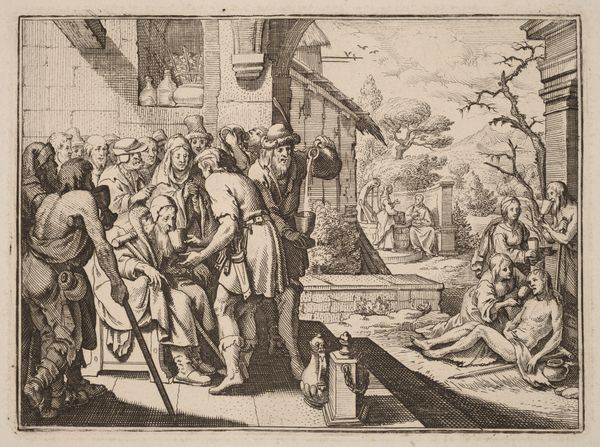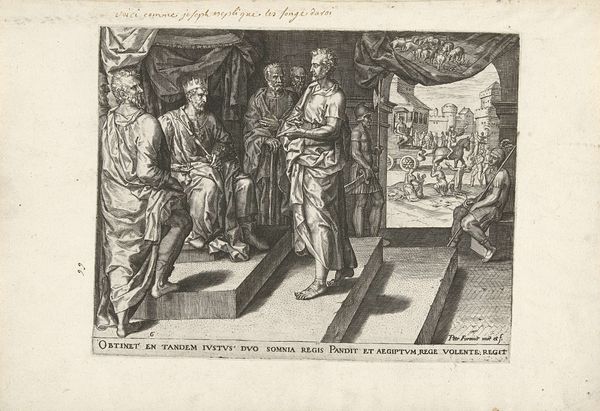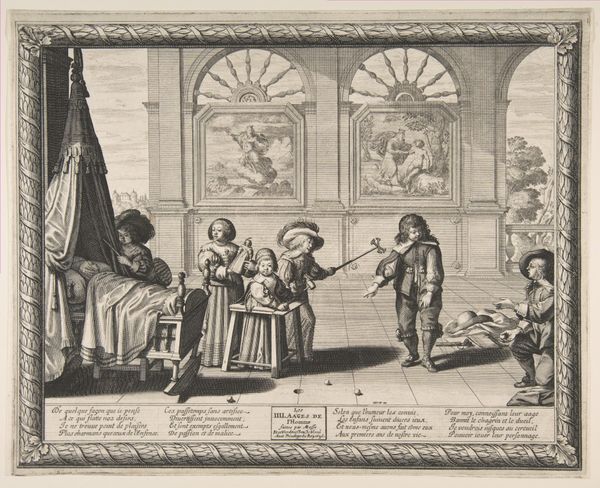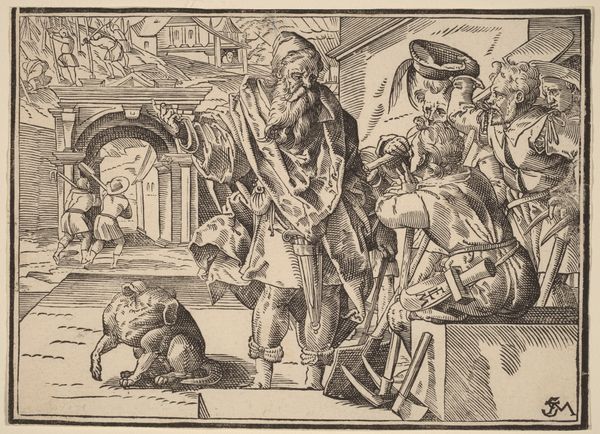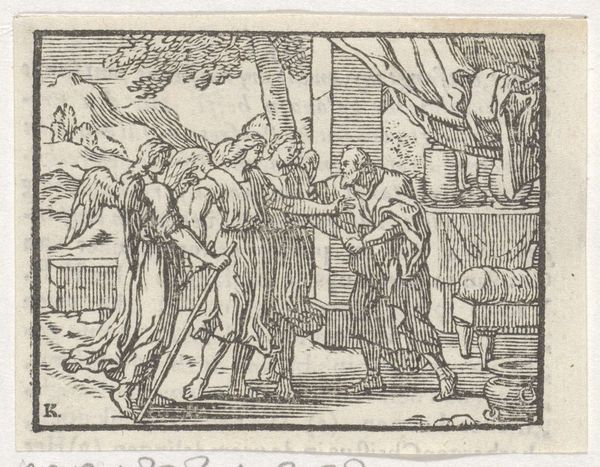
drawing, print, metal, engraving
#
drawing
#
narrative-art
#
baroque
#
mechanical pen drawing
# print
#
metal
#
pen sketch
#
sketch book
#
landscape
#
figuration
#
personal sketchbook
#
sketchwork
#
pen-ink sketch
#
pen work
#
sketchbook drawing
#
genre-painting
#
storyboard and sketchbook work
#
sketchbook art
#
engraving
Dimensions: height 87 mm, width 129 mm
Copyright: Rijks Museum: Open Domain
Editor: So, this is Jan Baptist de Wael’s “Hunter Drinking from a Fountain,” dating sometime between 1642 and 1669. It looks like an engraving, perhaps on metal? There’s such detail in the cross-hatching, especially on the figures. I’m immediately drawn to how the material, the engraved line, defines social roles here. What do you see in this piece? Curator: I see the hand of the engraver and the conditions of its making as fundamental. This print isn’t just depicting a scene; it's presenting an artifact deeply embedded in the material culture of its time. Look at the inscription. The act of memorializing Gasparo de Roomer becomes a commodity circulated through the very means of its production—a print. How does the medium itself, with its reproducible nature, influence the perception of honor and patronage here? Editor: That's interesting. So you’re saying that the act of printing and distribution democratizes the honor, spreading it beyond just the elite circle? Curator: Precisely! Consider the labor involved: the engraver's skill, the materials used - metal, ink, paper - and the entire process of printing. Isn't the "hunter" a type of work as well? Also consider the figure in the habit drawing the water, their task also framed by labor and materiality. The act of consuming water and art intersect. What boundaries can we push between consumption, production and material existence? Editor: So, rather than focusing solely on the narrative, we can also consider the economic and social forces at play, literally etched into the very fabric of the print? I’ve learned to consider materials beyond aesthetics and symbolic, too. Curator: Exactly. It makes us consider not just what is depicted, but also how it came to be.
Comments
No comments
Be the first to comment and join the conversation on the ultimate creative platform.

